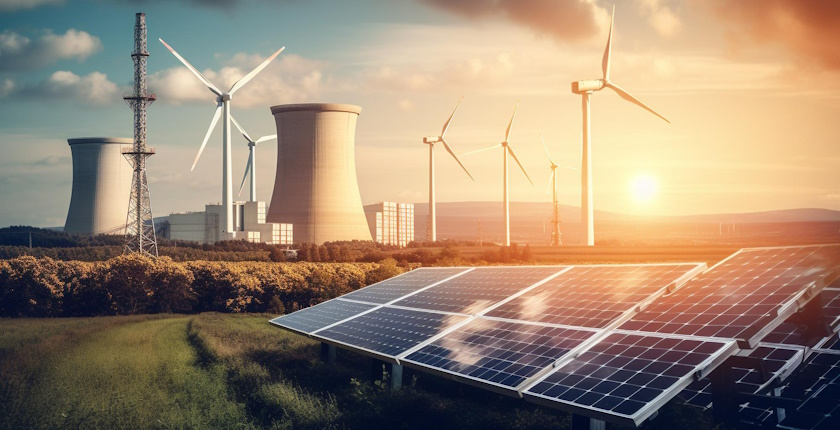
Photo: Vecstock on Freepik
The European Commission published an impact assessment on possible pathways toward making the European Union climate neutral by 2050. It recommended measures to achieve a cut in annual net emissions of 90% by 2040 from the 1990 level. It implies ending the use of coal.
The European Commission endorsed the advice of the European Scientific Advisory Board on Climate Change (ESABCC) on an important decarbonization target. The next administration, after the European elections in May, is set to negotiate with the European Parliament and member states on the policies required to eliminate net greenhouse gas emissions by 2050.
The EU’s executive arm proposed to aim for a 90% cut by 2040 against the 1990 level. It compares to the 55% objective for 2030, enshrined in the so-called Fit-for-55 package.
Clear signal to investors
“We are sending a clear signal to investors that Europe is staying the course and offers them long-term predictability and stability. For our citizens, we are giving a clear sign that cleaner solutions are on the way, and that we are accompanying them in the transition,” European Commissioner for Energy Kadri Simson said.
The share of electricity in energy consumption will double, from 25% in 2030 to 50% in 2040, she stressed. The difference will predominantly be covered from sun, wind and hydropower, but also low-carbon technologies, in her words.
No more coal past 2040
Such a pathway may affect Poland the most, as it still produces 70% of its electricity from coal. The country only has a tentative 2049 deadline for the coal phaseout. However, the new government recently vowed to adopt a definitive date.
In its announcement, the European Commission said coal would be phased out by 2040 and that the consumption of fossil fuels for energy is expected to reduce by approximately 80% compared to 2021. In the impact assessment itself, it wrote that the share of coal in final electricity consumption “becomes very small in 2030 and disappears shortly after 2040.” The leftover can be attributed to power imports.
All electricity production would be carbon free by the end of the next decade while the entire energy sector should be decarbonized “shortly after” that.
Among the conditions for meeting the proposed target are the competitiveness of the European industry, greater focus on a just transition that leaves no one behind and a strategic dialogue on the post-2030 framework, including with industry and the agricultural sector.
Predictability, sustainability for economy, society
“Setting a 2040 climate target will help European industry, investors, citizens and governments to make decisions in this decade that will keep the EU on track to meet its climate neutrality objective in 2050. It will send important signals on how to invest and plan effectively for the longer term, minimising the risks of stranded assets,” the commission added.
Carbon removals will also be needed to generate negative emissions after 2050
The European Green Deal now needs to become an industrial decarbonization deal that builds on existing industrial strengths like wind power, hydropower and electrolysers, and continues to increase domestic manufacturing capacity in growth sectors like batteries, electric vehicles, heat pumps, solar power, carbon capture, utilization and storage (CCUS and CCS), biogas and biomethane and the circular economy, the announcement reads.
Carbon removals will also be needed to generate negative emissions after 2050, the document says. Carbon pricing and access to finance are also critical for the delivery of emission reduction targets by European industry, the commissioners pointed out.
“Fairness, solidarity and social policies need to remain at the core of the transition. Climate action has to bring benefits to everybody in our societies, and climate policies need to take into account those who are most vulnerable, or face the greatest challenges to adapt. The Social Climate Fund and Just Transition Fund are examples of such policies which will already help citizens, regions, businesses and workers in this decade,” according to the plan.


















Be the first one to comment on this article.